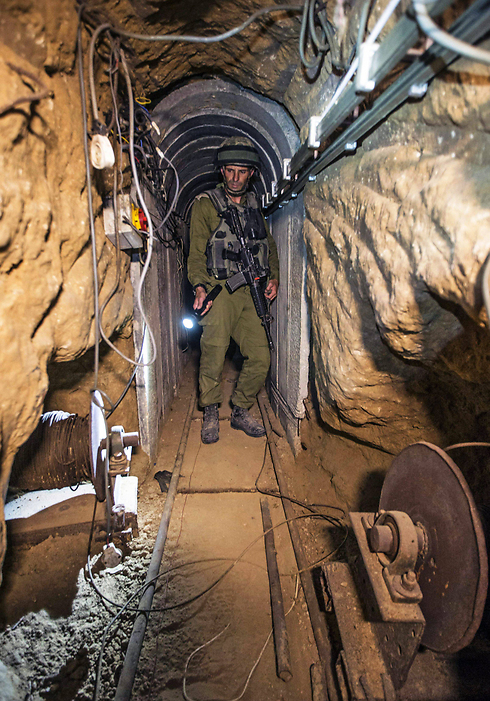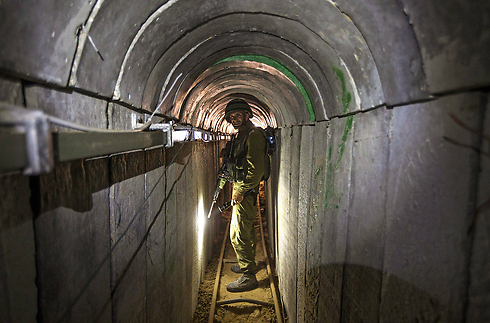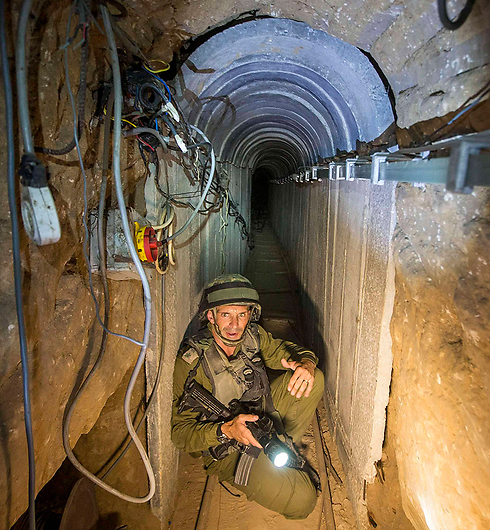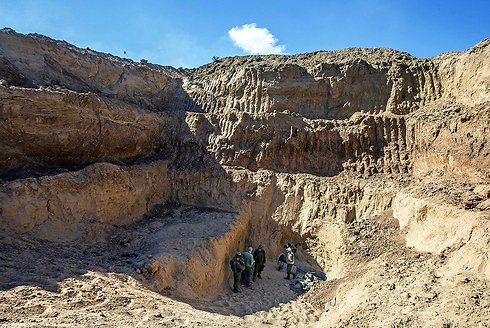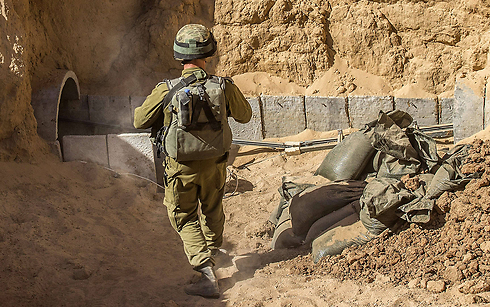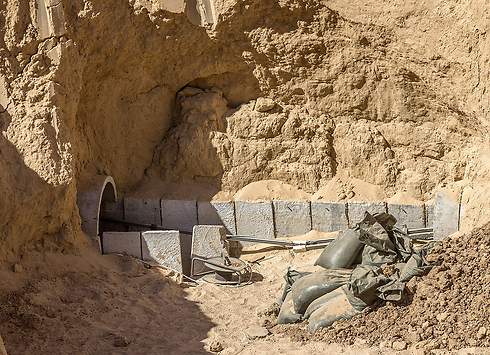Rare photos from ‘underground Gaza’ give glimpse of tunnel threat
Israel provides cement to Gaza to construct hospitals
and various other buildings and to reinforce infrastructures
Hamas steals that concrete and uses it to build tunnels to
infiltrate Israel to kill
This is Hamas's idea of 'peace'
Rare photos from ‘underground Gaza’ give glimpse of tunnel threat
Photographs taken by photographer Jack Guez show tunnels dug by Hamas
from Gaza into Israel. IDF troops still occupied with uncovering and destroying
more tunnels: ‘Every day of combat allows us to inflict greater damage on this
infrastructure.’
Itay Blumenthal
Underground Gaza – An insider’s look at
the enormous strategic threat posed by Gaza: A series of photos
captured by photographer Jack Guez on Friday reveal a tunnel dug from the Gaza
Strip into Israeli territory, exiting near a community.
The photographs illustrates the threat in full force – the tunnels are
professionally constructed, some reinforced with cement, equipped with rail
tracks, power cables and a communications system. Hamas has invested a fortune
in building the tunnels meant for terrorist attacks.
An Israeli army officer gives explanations to journalists
during an army organised tour in a tunnel (Photo: Reuters)
The IDF Spokesperson’s Unit announced on Friday that since the ground
operation was first launched, IDF troops have uncovered 31 tunnels, 11 of which
that were destroyed and taken out of use. Earlier, GOC Southern Command
Maj.-Gen. Sami Turgeman held a press briefing and addressed the threat posed by
the tunnels.
“We have been working steadfastly since the moment we entered the Gaza Strip
to locate and destroy the tunnels. We were able to uncover and demolish at
least half of the enemy's tunnels used for attacks and we are continuing to
work with determination."
"Hamas has been building underground infrastructure for years. There's
an underground Gaza – this isn't a slogan, but rather the plain truth. Our
units have come across it and in every day of our combat we manage to damage
this infrastructure.
He stressed that "It took the movement five years to build the tunnels,
some of the tunnels took four years to build, and we managed, in one week, to
cause significant damage to this capability. I believe that every day of combat
will allow us to deliver a fatal blow to what Hamas considers an important
infrastructure."
Israeli army officers talk at the entrance of a tunnel
(Photo: Reuters)
In general, the tunnel issue is defined in Gaza as a national flagship
project. It includes three types of tunnels: The smuggling tunnels on the
Philadelphi Route in Rafah, the offensive tunnels along the border fence with
Israel, and the strategic tunnels inside the Gaza Strip which are meant to be
used mainly for mobilizing forces between areas at times of emergency, but also
for firing rockets, mine laying and kidnapping.
The cost of each tunnel, some of which extend over hundreds
of meters, is huge. There are hundreds of people in the Strip whose only
purpose in life is to dig.
The Gaza tunnel project is organized, calculated and does not leave any room
for piracy. It is coordinated between all the factions' military wings and
includes the registration of all the tunnels in the Strip, including the
tunnels' routes, the ways to enter them and the destination according to which
they are mapped.
The tunnels are divided into four districts: The northern Strip, Gaza city,
the central Strip and the southern Strip. There is one person in charge of each
district in coordination with the other districts, and only one person in
charge of each tunnel. In order to maintain the secrecy, his name and the tunnel's
route are kept confidential. The diggers and the person in charge of the
district are the only ones familiar with the details.
Each military wing in the Strip is permitted to dig a tunnel only after
coordinating the activity with the person in charge of the district. An average
dig takes about four months. Most of the tunnels are dug by hand during the
night, and each tunnel is accurately calculated.
The factions have defined every part of the Strip as eligible for a tunnel
for military purposes. When a tunnel is dug near the border fence, those
responsible for it notify the land owner, subject to security coordination, and
stress the structural separation:
Everything above the ground belongs to him and everything under the ground
is under the responsibility of the military factions. If needed, he will be
financially compensated. Thus, some of the land owners know that there is a
tunnel under their lands, but they are unfamiliar with its route.
